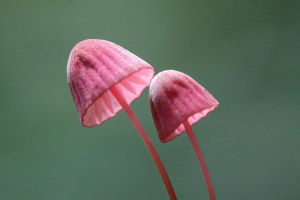Mushroom foraging is a beloved activity for many who enjoy the natural world, offering fresh air, exercise, and the excitement of discovering wild edible treasures.
However, nature hides dangers along with its delights.
Poisonous mushrooms, some deceptively similar to safe varieties, pose a real risk to health and life. Learning to recognize and avoid them isn’t just practical—it’s a vital step in cherishing life itself.
Why Cherishing Life Includes Mushroom Safety
The act of cherishing life is about valuing our health, our loved ones, and the environment we enjoy. Venturing into nature with knowledge not only enriches the experience but also keeps us safe. Poisonous mushrooms are responsible for serious illnesses, sometimes even fatalities. Foragers must take special care to avoid risky mushrooms, ensuring that their adventures contribute to well-being rather than harm.
Common Poisonous Mushrooms to Avoid
Below is a list of some of the most poisonous mushrooms to watch out for, as well as tips on how to identify them and understand their risks.
1. Death Cap (Amanita phalloides)
- Description: The Death Cap mushroom, responsible for the majority of mushroom poisoning fatalities, is known for its pale green or yellowish cap and white gills. Its innocent appearance is misleading, as even a small bite can cause severe poisoning.
- Toxins: Contains amatoxins, which cause liver and kidney failure.
- Symptoms: Symptoms may not appear for 6-12 hours, starting with nausea, abdominal pain, and vomiting. Later stages can involve jaundice, seizures, and coma.
2. Destroying Angel (Amanita bisporigera and Amanita virosa)
- Description: These all-white mushrooms are often mistaken for edible varieties. Found in forests and grassy areas, they have a smooth, pure white cap and white stem with a bulbous base.
- Toxins: Like the Death Cap, Destroying Angels contain lethal amatoxins.
- Symptoms: Gastrointestinal symptoms occur within hours, followed by a deceptive recovery period before liver and kidney damage sets in.
3. Deadly Webcap (Cortinarius rubellus)
- Description: The Deadly Webcap has an orange-brown cap with a slight, web-like veil. This mushroom is particularly dangerous because it resembles several edible species.
- Toxins: Contains orellanine, which damages the kidneys.
- Symptoms: Symptoms appear 3-14 days after ingestion, often beginning with flu-like symptoms and progressing to kidney failure.
4. False Morel (Gyromitra esculenta)
- Description: False Morels are recognizable by their brain-like, wrinkled cap, which is reddish-brown. Though sometimes eaten after specific preparation, this mushroom remains dangerous.
- Toxins: Contains gyromitrin, which converts to monomethylhydrazine (MMH), a toxin harmful to the liver and central nervous system.
- Symptoms: Nausea, vomiting, dizziness, and in severe cases, seizures and coma can occur.
5. Jack-O'-Lantern Mushroom (Omphalotus olearius)
- Description: With its striking orange color, the Jack-O'-Lantern is often mistaken for chanterelles. It grows in clusters on wood, including tree stumps.
- Toxins: Contains illudin, which causes gastrointestinal distress.
- Symptoms: Although not typically fatal, symptoms include intense cramps, vomiting, and diarrhea that can last for hours.
6. Panther Cap (Amanita pantherina)
- Description: Similar to the Fly Agaric, the Panther Cap has a brown cap with white spots and white gills. Its appearance can vary but often attracts foragers due to its unique look.
- Toxins: Contains ibotenic acid and muscimol, which affect the nervous system.
- Symptoms: Hallucinations, delirium, seizures, and, in severe cases, respiratory failure may occur.
7. Poison Fire Coral (Podostroma cornu-damae)
- Description: One of the rarest but deadliest mushrooms, Poison Fire Coral appears bright red and resembles coral. It's mostly found in Asia but has been reported in some parts of Australia.
- Toxins: Contains potent trichothecene mycotoxins.
- Symptoms: Leads to severe skin peeling, hair loss, and organ failure.
Cherishing Life with Mushroom Foraging Tips
- Be Absolutely Sure: When foraging, only consume mushrooms if you are 100% certain of their identity. Use reputable guidebooks or apps, and consult with local experts if available.
- Practice “When in Doubt, Throw It Out”: If there is any uncertainty about a mushroom’s safety, it’s best to leave it behind.
- Know First Aid for Mushroom Poisoning: Symptoms can vary widely, and it’s critical to seek medical attention immediately after ingestion if poisoning is suspected.
While mushroom foraging offers joy and a sense of connection with nature, it’s essential to remember that the forest hides many dangers. Cherishing life means respecting the boundaries between safe and unsafe and taking responsibility to stay informed. With caution, respect, and the right knowledge, we can cherish life fully—celebrating the gifts of nature while wisely avoiding its hidden perils.


